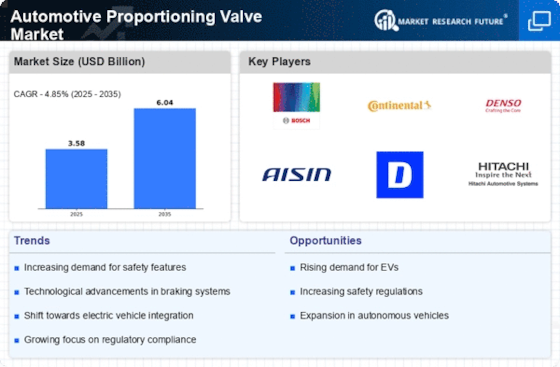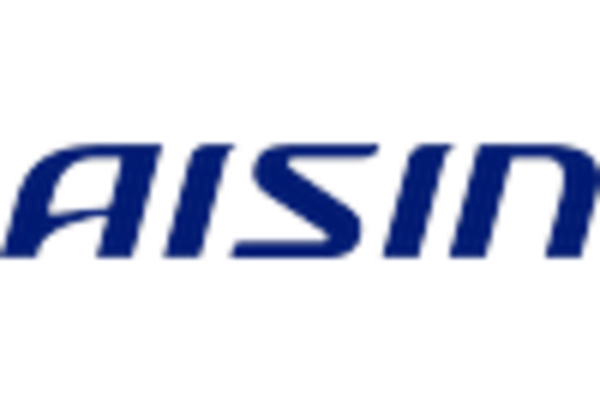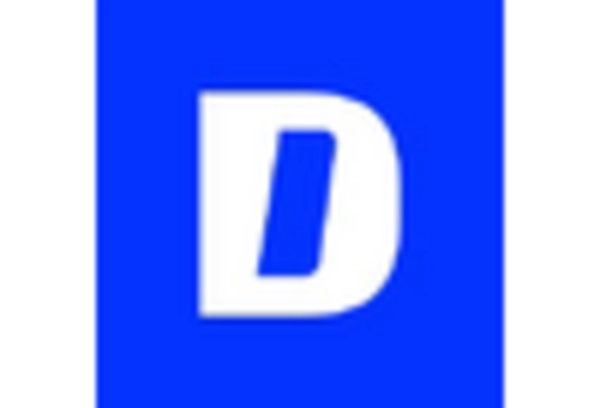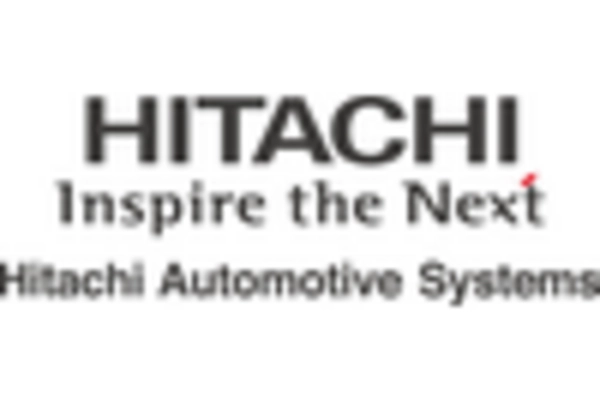Increasing Vehicle Production
The automotive industry is witnessing a surge in vehicle production, driven by rising consumer demand and economic growth. This trend is expected to bolster the Automotive Proportioning Valve Market, as these components are essential for ensuring optimal braking performance in vehicles. In 2025, the production of passenger cars and commercial vehicles is projected to reach unprecedented levels, with estimates suggesting a production volume exceeding 90 million units. Consequently, the demand for automotive proportioning valves is likely to increase, as manufacturers prioritize safety and performance in their designs. This growth in vehicle production not only enhances the market for proportioning valves but also encourages innovation in valve technology, leading to improved efficiency and reliability.
Growth of Electric and Hybrid Vehicles
The shift towards electric and hybrid vehicles is reshaping the automotive landscape, presenting new opportunities for the Automotive Proportioning Valve Market. As these vehicles often require specialized braking systems to accommodate their unique weight distribution and performance characteristics, the demand for proportioning valves is likely to increase. In 2025, the market for electric vehicles is expected to surpass 30 million units, driving the need for advanced braking solutions. This transition not only enhances the market for proportioning valves but also encourages manufacturers to develop products that cater specifically to the requirements of electric and hybrid vehicles, thereby fostering innovation in the industry.
Technological Innovations in Valve Design
Technological advancements in valve design and manufacturing processes are significantly influencing the Automotive Proportioning Valve Market. Innovations such as lightweight materials, improved sealing technologies, and enhanced manufacturing techniques are leading to the development of more efficient and reliable proportioning valves. As the automotive industry continues to evolve, these innovations are expected to drive market growth. In 2025, the emphasis on performance and efficiency is likely to result in a market expansion, with manufacturers focusing on creating valves that not only meet but exceed current performance standards. This trend towards innovation not only enhances the functionality of proportioning valves but also positions them as critical components in modern braking systems.
Regulatory Compliance and Safety Standards
Stringent safety regulations and compliance standards are becoming increasingly prevalent in the automotive sector. Governments worldwide are implementing rigorous safety measures to protect consumers, which directly impacts the Automotive Proportioning Valve Market. As a result, manufacturers are compelled to integrate advanced braking systems that include proportioning valves to meet these regulations. The market is projected to grow as automakers invest in technologies that enhance vehicle safety, with a focus on reducing stopping distances and improving overall braking performance. This regulatory landscape not only drives demand for proportioning valves but also fosters innovation, as companies strive to develop products that exceed safety expectations.
Rising Adoption of Advanced Driver Assistance Systems (ADAS)
The growing integration of Advanced Driver Assistance Systems (ADAS) in modern vehicles is a key driver for the Automotive Proportioning Valve Market. ADAS technologies, which enhance vehicle safety and driving experience, often rely on sophisticated braking systems that utilize proportioning valves. As automakers increasingly incorporate these systems, the demand for proportioning valves is expected to rise. In 2025, the market for ADAS is anticipated to expand significantly, with projections indicating a compound annual growth rate of over 15%. This trend not only boosts the proportioning valve market but also encourages manufacturers to innovate and develop valves that can seamlessly integrate with these advanced systems.


















Leave a Comment